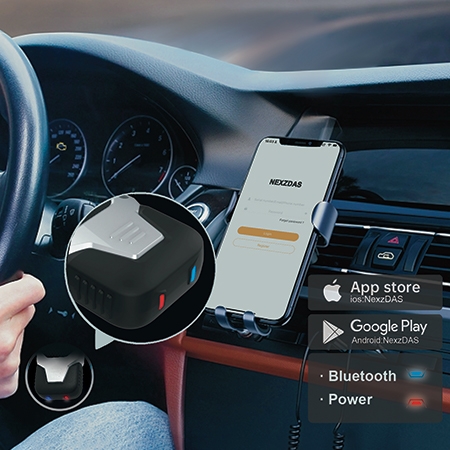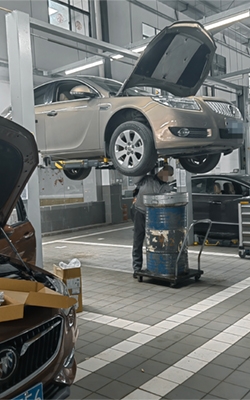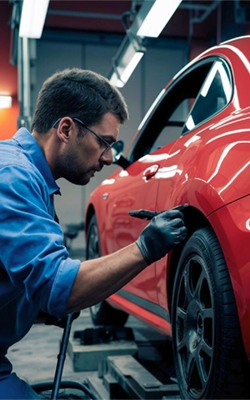Buy bluetooth car code reader online. The OBD2 car diagnostic scanner is a comprehensive diagnostic tool that supports 9 special functions of ABS bleeding, battery reset, oil reset, throttle learning, TPMS, SAS reset, DPF regeneration, injector adjustment, and EPB reset. It also provides complete OBD2 functions such as reading and clearing fault codes, I/M status, and more.

Bluetooth 5.2 Connection is More Stable and Transmission is Faster
- Lower Latency: The OBD2 car diagnostic scanner ensures quicker response between the device and your smartphone app for smoother real-time data viewing.
- Extended Range: Stable connection even when you’re outside the vehicle or moving around in the garage.
- Lower Power Consumption: Optimized Bluetooth 5.2 design helps preserve your phone and device battery life during diagnostics.
- Better Interference Resistance: The auto diagnostic code reader maintains a steady connection even in areas with multiple wireless signals.

Full System Diagnostic to Easily Check All Systems
- Full System Scan: Enables comprehensive diagnostics of all vehicle modules including engine, transmission, ABS, airbags, and more.
Quick Fault Detection: Rapidly identifies issues across all systems for efficient troubleshooting. - Real-Time Data Access: SISCO car code reader provides live monitoring of multiple system parameters during diagnostics.
- Wide Vehicle Compatibility: Supports a broad range of car makes and models for full system checks.
- Easy Code Reading & Clearing: Automatically reads and clears diagnostic trouble codes (DTCs) from all systems.
- Intuitive User Interface: The bluetooth car code reader implifies navigation through complete system reports for quick analysis.
Application
SISCO automotive code reader apps are primarily used in the automotive repair industry to help technicians diagnose issues in systems like engines and transmissions. These tools are also widely used in fleet management, vehicle manufacturing, insurance, emissions testing, and automotive education. They not only enhance repair efficiency and reduce repair costs but also provide consumers and fleet managers with real-time vehicle health monitoring, helping to extend vehicle lifespan and optimize operational costs.

Car Repair and Maintenance

Insurance Industry

Emissions Testing

Vehicle Manufacturing
| Model | SISCO-CR-Z100 |
| Operating System | Android/iOs |
| Processor | ARM 32-bit Cortex |
| Communications | Bluetooth |
| Input Voltage | DC 9~12V |
| Operating Temperature | -20 to 70°C(14-158°F), Relative Humidity<90% |
| Storage Temperature | -40 to 85°C(40 to 185°F), Relative Humidity<90% |
| Dimension | 73*47*24mm |
| Weight | 100g |
Q1: What is a code reader?
A1: A code reader is a device used to quickly retrieve and display data encoded in specific formats. In the automotive field, it typically refers to a tool that connects to a vehicle's OBD-II port to read diagnostic trouble codes, helping identify issues related to the engine or emissions system. In retail or logistics, a code reader may refer to a scanner that reads barcodes and QR codes for inventory, checkout, or tracking purposes.
Q2: Does a car have to be running to use a code reader?
A2: No, a car does not have to be running to use a code reader, but the ignition usually needs to be in the "ON" position (engine off, but electronics on). This powers the vehicle's onboard computer system, allowing the code reader to communicate with it and retrieve diagnostic trouble codes. Some functions, however—like real-time data—may require the engine to be running.
Q3: What's the difference between a code reader and a scan tool?
A3: A code reader and a scan tool are both used to diagnose issues in vehicles, but they differ in functionality:
- A code reader is a basic device that reads and clears diagnostic trouble codes (DTCs) and may turn off the check engine light. It's useful for simple diagnostics.
- A scan tool is more advanced. In addition to reading and clearing codes, it can show live sensor data, run system tests, access vehicle information, and sometimes even program modules.
In short, all code readers are scan tools, but not all scan tools are basic code readers-scan tools offer much more detailed and professional-level diagnostics.
Tips: How often should I use a car code reader?
You should use a car code reader any time the check engine light, service engine soon light, or other dashboard warning indicators appear, as these are signs the vehicle’s onboard diagnostics system has detected an issue. However, it’s also a good idea to incorporate regular scans into your maintenance routine—such as every two to three months or before taking long trips. This proactive approach allows you to detect hidden or intermittent problems that may not trigger a warning light immediately but could affect performance or fuel efficiency over time. If you own an older vehicle, drive in extreme conditions, or manage multiple cars, more frequent scans can provide added peace of mind. By identifying and addressing issues early, you can avoid unexpected breakdowns, reduce repair costs, and extend the lifespan of your vehicle’s components.
Thank you for buying industrial test and measurement equipment on SISCO.com, all products sold by SISCO and the partner cover a 12 months warranty, effective from the date of receiving the products.
What is covered?
SISCO is responsible for providing free spare parts, and free technical support to assist the customer to repair the defective products until the problem is solved.
What is not covered?
- Product purchased from anyone other than a SISCO store or a SISCO authorized reseller.
- Expendable parts.
- Routine cleaning or normal cosmetic and mechanical wear.
- Damage from misuse, abuse or neglect.
- Damage from use of parts other than SISCO approved.
- Damage from use outside the product’s usage or storage parameters.
- Damage from use of parts not sold by SISCO.
- Damage from modification or incorporation into other products.
- Damage from repair or replacement of warranted parts by a service provider other than a SISCO authorized service provider.
- Damage caused by the application environment not meeting the product usage requirements and the failure to perform preventive maintenance.

